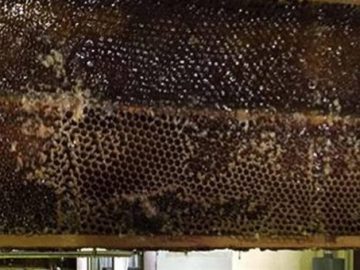Airy and spacious apartment with a few green plants over and there in a lovely and cozy room. We know the rule – keep plants only in your living room and never ever in the bedroom. Apparently, we can’t keep any plant that we like in our houses. Not all of them turned to be good and beneficial for our health.
This article claims that an indoor plant that is commonly kept in homes and offices is so poisonous that it can kill a child in less than a minute and an adult in 15 minutes. It also warns that this “killer plant” even if touched and then you rub your eyes it can cause permanent blindness.
“My son died because he put a piece of leaf in his mouth and the tongue swelled leading to suffocation. This plant is quite common in many homes and offices. It is deadly poisonous and dangerous, to the point of killing a child in 1 minute and an adult in 15 minutes. If you touch it by chance you should never bring your fingers to your eyes, as this could cause permanent blindness. Warn your friends and family”.
The purpose of this man revealing his story publically was to warn every person who by any chance has owned this plant in its home as it may lead to death.
His son’s name was Esteban. He was 5 years old and was playing around the house. However, he started to feel bad and his mother thought it was just indigestion or fatigue. Unfortunately, this wasn’t the case; the child showed a strange color on his skin and had great difficulties with breathing. The parents immediately called 911, and the child was transferred to the hospital where he was admitted as poisoning emergency. No one could tell what was really happening, and after half an hour the doctor brought the terrible news to Esteban’s parents that the child had passed away. The doctor believed that the reason for his death was poisoning from something he had eaten. The parents were in great shock, as they could not figure out what has Esteban eaten that could cause such terrible effect.
After thorough blood testing, it was revealed that the child had inside his blood stream a large dose of a chemical known as calcium oxalate.
This chemical is found in a plant called Diefenbaker or better known in countries of Latin America as Amoena. Dieffenbachia is indeed very common among household plants and frequently kept in offices because it is simple, endurable and requires little sunlight. Eating its leaves or rubbing your eyes with your hands after coming into contact with the plant may indeed cause irritation, which in turn can cause the swelling. As far as the plant causing death, however, Ed Krenzelok, an emeritus professor of pharmacology at the University of Pittsburgh Medical Center and a former director of the Pittsburgh Poison Center who has researched Dieffenbachia toxicity specifically, is skeptical:
“I’ve never ever seen a fatality in my experience related to Dieffenbachia or any of the members of the Arum family. I’ve reviewed, virtually […] hundreds of thousands of cases in my career involving plants of this nature.”
The truth is that Dumb Canes are poisonous, but it rarely kills human or animal. All parts of the plant have lots and lots of microscope needle-shaped calcium oxalate crystals and when some unfortunate animal (or person) chows down, they end up with a painful and swollen mouth. In some cases the swelling is so bad it causes the victim to go silent for inability to talk, this is where the common name of Dumb Cane came from. Although not a cold hearted killer, it does cause some very unpleasant side effects and a hefty amount of pain to go with it.
Avoid coming into contact with the sap and if you do, wash it off before you accidentally rub your eye or somewhere equally unfortunate.
However, this warning dramatically exaggerates the risk of death associated with dieffenbachia poisoning. The consequences of dieffenbachia poisoning are normally not life threatening and victims usually make a full recovery. Considering the victim has eaten the plant, it may potentially cause severe swelling, enough to block the victim’s airways, death is a possible result.

However, researchers indicate that actual fatalities in humans are extremely rare. An article discussing caladium, dieffenbachia, and philodendron plant poisoning published on the Emedicine website notes:
“Patients with history of oral exposure (chewing and/or swallowing) have been reported to have severe swelling, drooling, dysphagia, and respiratory compromise, but this is not common. In a large retrospective study of 188 patients with plant oxalate exposure, all cases were determined to be minor and all resolved with minor or no treatment. Patients can also experience dermal and ocular exposure, resulting in contact dermatitis or keratoconjunctivitis. Symptoms that result from these routes of exposure also appear to resolve with supportive care. The serious complication of aortoesophageal fistula following ingestion of a dieffenbachia leaf in a girl aged 12.5 years has been described in a single 2005 case report. The girl recovered following surgical intervention.”
And, the claim that rubbing your eyes after touching the plant can cause permanent blindness also seems to be an exaggeration. The Emedicine article notes that “Ocular exposure may result in eye pain, redness, and lid swelling”, but no permanent blindness.
Dieffenbachia can cause a number of distressing and painful symptoms. Information about dieffenbachia poisoning published on the Medline Plus website records the following poisoning symptoms: burning in mouth or throat, damage to cornea of the eye, diarrhea, eye pain, hoarse voice, nausea or vomiting, swelling in mouth or tongue.
It should also be noted that dieffenbachia related poisoning among household pets does regularly occur and in some cases has resulted in the death of the animal.
It is actually very important that householders are aware that their dieffenbachia plants are potentially poisonous, especially if they are parents or guardians of younger children or have pets.




































Connect with us